HORSE is pioneering a smart factory approach for powertrain production, integrating cobotics and virtual twins in a fully digital environment that adapts to changing demands, enhancing both efficiency and sustainability across its global operations. CTO Julien Faure, and CPEO, Antonio Vaz expound…
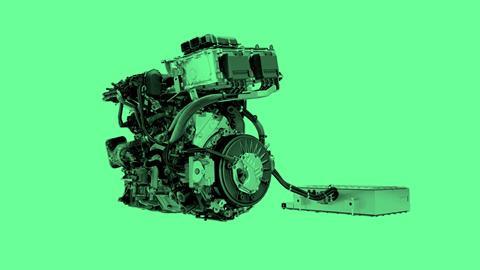
Recent powertrain technology powerhouse, HORSE started life in 2023 as part of the Renault Group, but is now a division of Horse Powertrain, the strategic partnership between Renault Group and Geely, which is soon to be joined by Aramco for sustainable fuel innovations. Officially formed in May of 2023, HORSE leverages decades of Renault’s expertise in hybrid and low-emission powertrain development, and GEELY’s time-honoured proficiencies in advanced automotive manufacturing processes and technologies; creating a foundation for its ambitious goal to lead the market in advanced, low-emission internal combustion and hybrid systems.
Already firing on all cylinders, HORSE presently has operations in seven countries, (Argentina, Brazil, Chile, Portugal, Romania, Spain, and Turkey), including R&D centres in Spain and Romania. Headquartered in Madrid, the powertrain company has quickly established global reach and vision; powered by a smart factory infrastructure that takes automotive production to the next level.
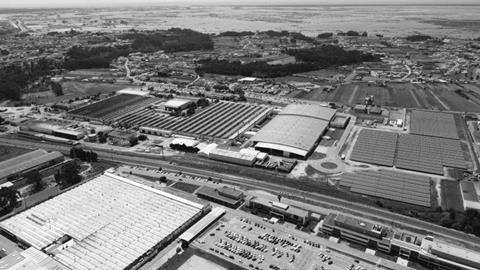
HORSE integrates cutting-edge digital tools into its production, highlighted by its innovative Matrix Flow production system. This system replaces traditional conveyor belts with mobile programmable cobots (MPCs) and a fully digital assembly line that maximises efficiency and sustainability. At the Aveiro plant in Portugal, Matrix Flow’s real-time data tracking, automation and autonomous platforms adapt production lines to shifting demand and component supplies.
”Cobotics is already here – in fact, there are over 3 million cobots in operation worldwide!”
- Antonio Vaz, Chief Process Engineering Officer, HORSE
HORSE’s use of Virtual Twin technologies to optimise production
As part of this digital production infrastucture, the company utilises Virtual Twin technologies. HORSE’s Virtual Twin project is just one example where smart factory principles are being utilised to accelerate product development and decision-making processes. The project, which it launched in September of this year in partnership with Dassault Systems, has been a fundamental contributor to its digital transformation.
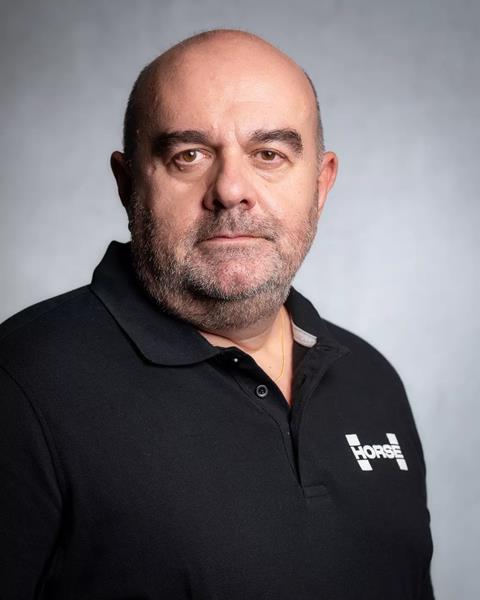
Julien Faure, Chief Technology Officer, HORSE, says, “For this pioneering initiative, we’ve created a library of detailed digital twins of our powertrains and their individual components. These integrate data from every stage of the product development process – including design, tuning, and testing – allowing the twins to serve as complete digital replicas that are invaluable for collaboration among our global teams.”
The system is an integrated one. Teams located in different regions can access and collaborate on the twins via a single virtual platform, eliminating many barriers posed by physical and geographical separation. This capability not only streamlines communication but also allows for a more cohesive and efficient approach to product development.
How Virtual Twins can improve sustainability footprints across HORSE’s production
Digital Twins for Sustainability: To what extent do the digital twins help HORSE in making more sustainable choices in materials, design processes, and lifecycle management of powertrain components? Can you provide an example?
”Virtual twins can boost operational efficiency by 10-25%, as they enable simulation, monitoring, and optimised resource allocation based on real-time data”
- Julien Faure, Chief Technology Officer, HORSE
And the technology also has benefits for sustainability. The virtual twin can help HORSE minimise its global environmental impact, conserve resources, and support its long-term sustainability goals.
“One of the areas we’ve been seeing this so far is in prototyping,” says Faure, “is a part of the powertrain development process that traditionally consumes significant amounts of raw materials and energy. The HORSE Virtual Twins project has allowed us to significantly reduce our resource consumption and associated waste, leading to a more sustainable development process.
Read more stories from HORSE
- HORSE powertrain continues to expand supply in range extender market
- Powertrain innovator HORSE welcomes Aramco as strategic investor
- Q&A with Patrice Haettel: CEO of powertrain tech firm, HORSE
- Next-generation Range Extender powertrains by HORSE
“For example,” he says, “when developing a new electric motor for a powertrain, we can create a digital twin of the motor. This virtual model allows HORSE to simulate various critical factors, such as energy consumption, heat dissipation, and material wear. By doing so, we can explore the performance of different materials without the need for physical testing.”
In one case study, Faure says HORSE used the digital twin to evaluate various copper alloys for motor windings. “By analysing these alloys based on factors like conductivity, durability, and recyclability, we were able to select the optimal material that not only enhanced performance but also aligned with our sustainability objectives.”
HORSE’s Virtual Twins and rapid responses to customer requirements like fluctuating EV demand
In an industry where speed and flexibility are paramount, the Virtual Twin project is allowing HORSE to translate customer needs into measurable system requirements. This allows it to better understand the impacts of any changes and react more rapidly to shifts in consumer preferences.
“Virtual twins can reduce product development times by up to 50%. By replacing physical prototypes with digital simulations, teams can iterate designs quickly and perform comprehensive virtual testing, saving both time and costs”
- Julien Faure
One of the key advantages of its Virtual Twins project is its modular approach, which allows the company to leverage existing solutions while adapting, enhancing, and modifying requirements virtually. This flexibility is crucial in meeting the dynamic demands of its customers.
“Additionally,” says Faure, “the Virtual Twins project improves collaboration among our global teams. By ensuring that everyone works with the same up-to-date data, HORSE can make more informed decisions and respond more quickly to customer demands, whether they involve performance upgrades, design changes, or meeting regulatory standards in new markets.”
Data-Driven Innovation: powertrain design and performance enhancement
Virtual Twins, if tapped correctly, have an in-built data feedback loop. The extensive data gathered through the Virtual Twin project enables HORSE to drive innovation and enhance powertrain performance by providing actionable insights throughout the development process. By linking engine and parts simulations to customer data, the company is able to reduce the need for physical testing and optimise test severity based on real-world usage.
Faure says, “one concrete example is our automatic calibration tool, which provides engineers with precise guidance for carry-over and carry-across labels. It even allows for comparisons between different software versions, enhancing quality while reducing development time.”
“Leveraging data insights can increase product quality by 20-30%. Big data analytics helps to identify design flaws, optimise configurations, and tailor solutions to meet customer needs more effectively”
- Julien Faure
The Power Electronics Box and Matrix Flow: The enhancement of digital production
HORSE’s Averio plant in Portugal, home to its Power Electronics Box (PEB), as well as its Matrix Flow production system, has been making waves in the industry lately. HORSE’s Power Electronics Box (PEB) is an advanced power management system designed for electric vehicles, integrating crucial power electronics—like inverters and converters—into a single compact unit. This setup enhances efficiency, reduces power loss, and simplifies the EV’s powertrain architecture, helping optimise energy use and boost performance.
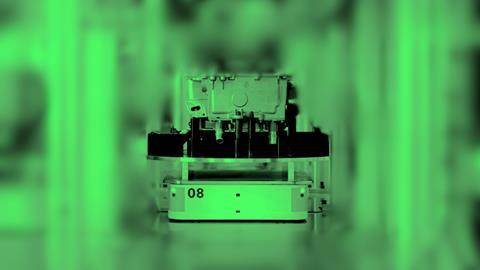
But the system rests on an innovative, digital production foundation: Matrix Flow.
Matrix Flow and achieving fully digital autonomous production
Matrix Flow, is a fully digital autonomous production process which integrates advanced technologies to achieve full digitalisation and drive innovation; featuring autonomous platforms powered by geolocation and real-time monitoring capabilities.
This level of automation brings with it significant sustainability benefits. Antonio Vaz, HORSE’s Chief Process Engineering Officer, says, “the automation of power electronics box (PEB) production at HORSE has significantly reduced consumption and waste. We’ve cut the factory’s physical footprint by 25% and the overall building size by 30%, optimising our workspace.
“Additionally,” he says, “our automated systems have achieved a 50% reduction in energy consumption compared to traditional conveyor belt systems. These improvements enhance operational efficiency and reinforce our commitment to sustainability in manufacturing.”

Vaz says the Matrix Flow system offers significant advantages over traditional assembly lines, making the transition highly beneficial. By utilising Mobile Programmable Cobots (MPCs) to deliver precise components and sub-assemblies to both workers and robots at the right time, the system reduces downtime and boosts efficiency. Smaller MPCs act as mobile workstations, providing parts and tools directly to employees, streamlining the workflow.
“This system’s flexibility allows quick adjustments to production, whether for new products or changes in capacity, and minimises material handling and waiting times,” he says. “As a result, tasks are completed more efficiently. Additionally, production lines are compacted into modular, self-contained units that can be easily reconfigured, improving the overall industrial layout. These enhancements, along with the use of smart energy solutions, contribute to significant reductions in energy consumption and operational costs.”
How Cobotics and AI integration improve worker safety and productivity in the assembly process
The integration of AI and Cobotics ensures that manufacturing remains competitive by boosting productivity and product quality, while enhancing the quality of life for workers. Vaz highlights these technologies help shorten production cycle times and improve the reliability of output. “For example,” he says, “our AI-driven vision quality control systems have demonstrated significant value; after a period of automatic learning, the software can independently detect defects, streamlining the quality assurance process.”
In turn, Cobots assist in non-ergonomic tasks during the assembly process, which increases overall safety. Their use has also led to a reduction in the physical space required for production. “This is because Cobots can operate safely alongside human workers without the need for protective barriers or enclosures,” says Vaz, “which are typically necessary for traditional industrial robots.”
Additionally, Cobots have a lower break-even point due to their relatively low initial investment and operational costs. This means that businesses can automate more workstations without needing to produce a high volume of products to justify the investment.
“AI is going to be one of the leading priorities in future. It will improve overall process engineering and streamline operations to reduce time to market”
- Antonio Vaz
The future of process enginnering in automotive production
Vaz believes the role process engineering will change significantly in the next 5-10 years, owing to advancements in digital tools and automation that we often lump together under the ‘Industry 4.0’ umbrella. “Process engineers will need to adapt to better interface with these technologies and shift towards more data-driven decision-making,” he says.
“Emerging technologies such as autonomous robots, IoT sensors, AI, and digital twins will be pivotal in this transformation. For example, process engineers will increasingly use digital twins to model and optimise production environments.
“Additionally, the integration of automated conveyor systems, guided vehicles, and Cobots will streamline material handling, allowing engineers to concentrate on strategic improvements instead of routine tasks. This shift will improve space and energy efficiency while enhancing process cycle times
Topics
- Automation and Digitalisation
- Battery System and Pack Production
- Digital Tools
- Digital Twin
- Electrification
- Europe
- EV component manufacturing
- Factory Transformation
- Flexible Production
- Geely
- Kaizen
- Manufacturing engineering
- OEMs
- Plant Functions
- Powertrain
- Regions
- Renault
- Smart Factory
- Sustainable production
- Sustainable strategies





























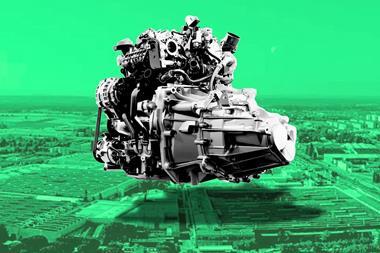

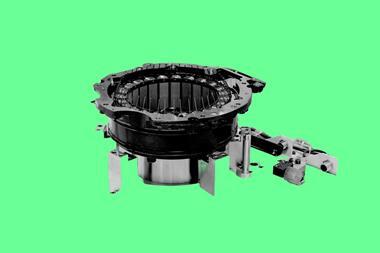
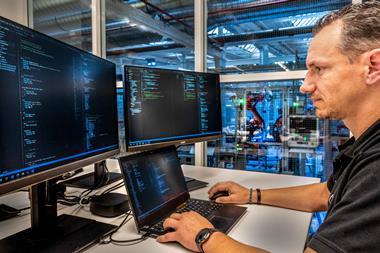
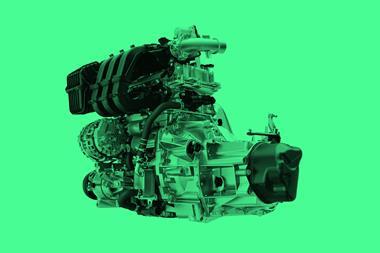
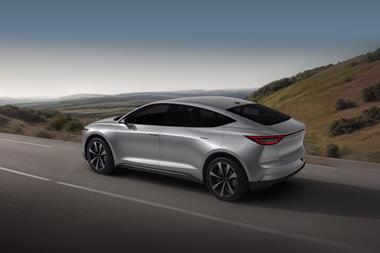



No comments yet